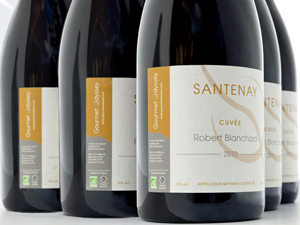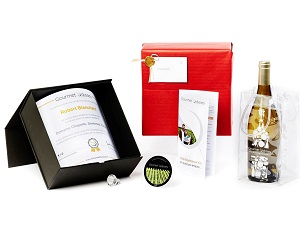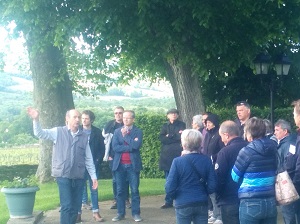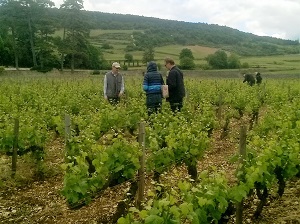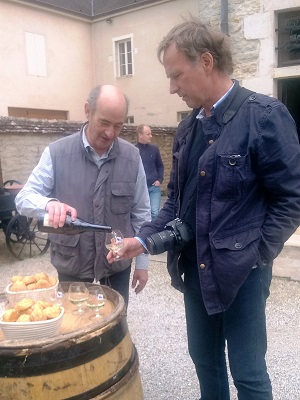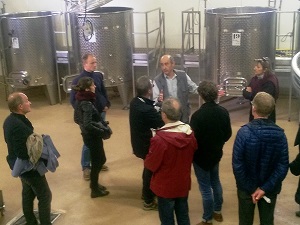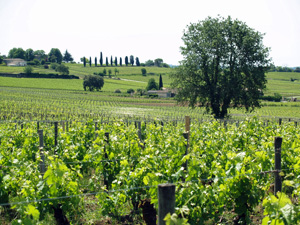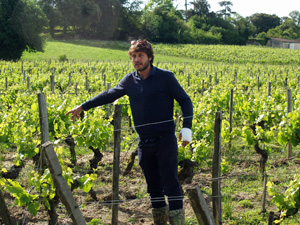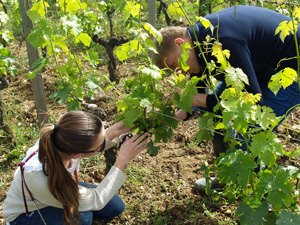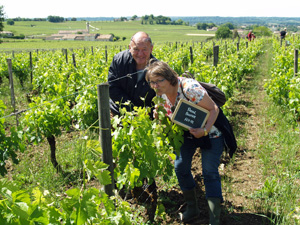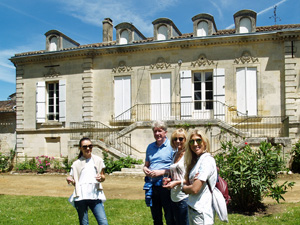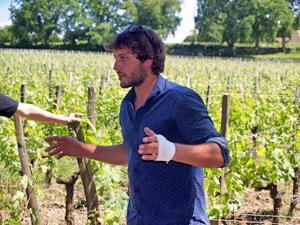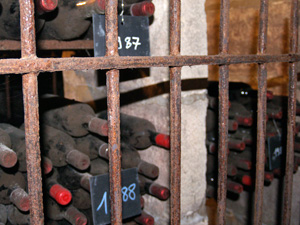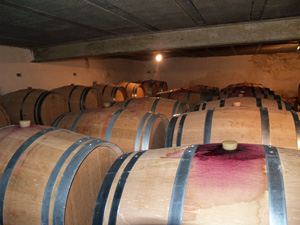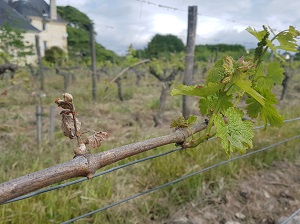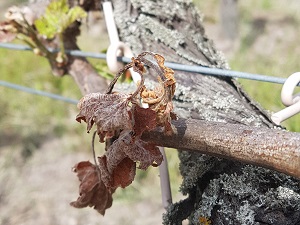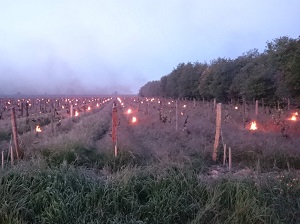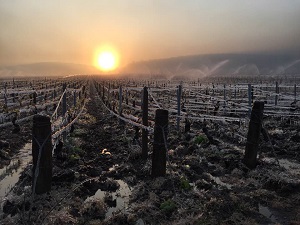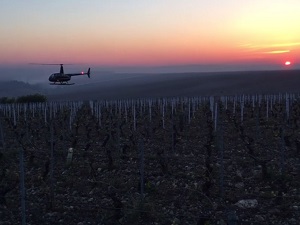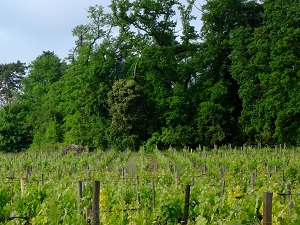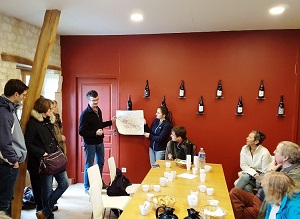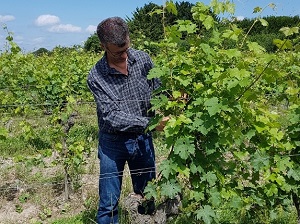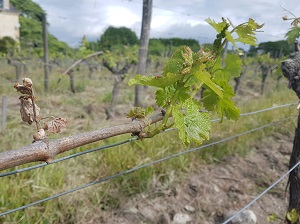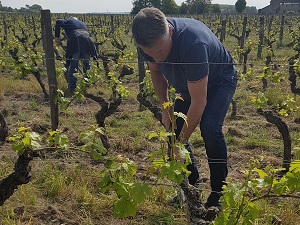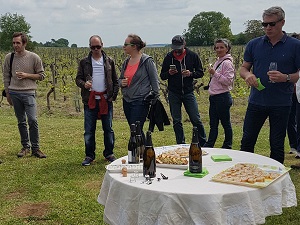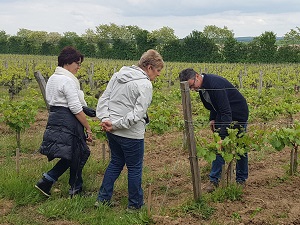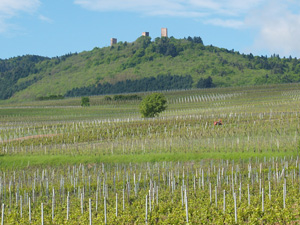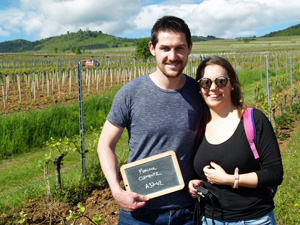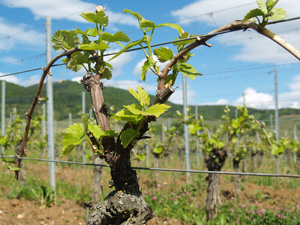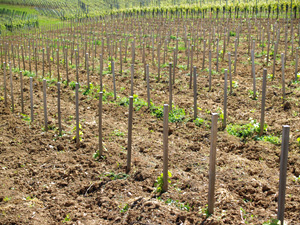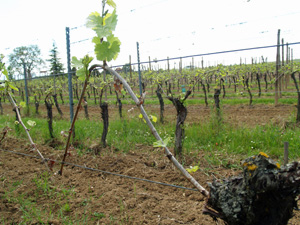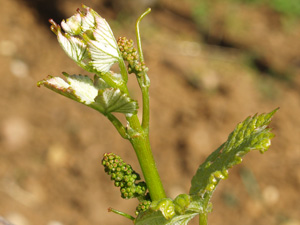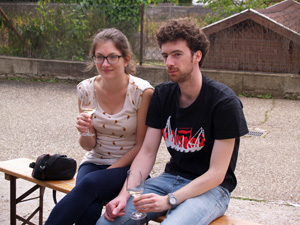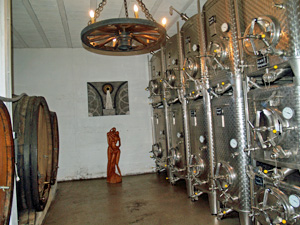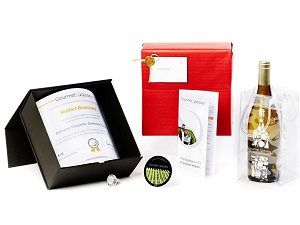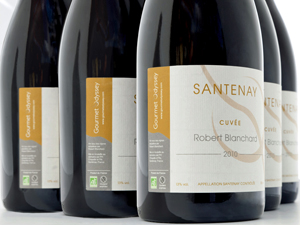After much excited anticipation, the first Discovery Experience Days got underway last week-end at Château Coutet, our new partner wine-maker in Saint-Emilion. The warm welcome and passion of the winemakers lived up to expectation and we had a fantastic time learning about the work in the vineyard and the fascinating history of the winery.
The day started in the vineyard, where we learnt about how the vines had been pruned during the winter months to control their growth and ensure that they produce less grapes, but of a higher quality come harvest time.
We slowly made our way up the hill as we learnt about the different grape varietals and the geology of the Saint-Emilion region. Château Coutet is one of the few wineries that has vines planted in each of the three different types of soil to be found in Saint-Emilion.
Just before we reached the plateau, we stopped in front of a plot of vines that had been left for us to work on. With the rain that had fallen in the past few days, and the rising temperatures, the vines are growing rapidly at the moment. Our first task was to de-bud the vines by removing any branches that had sprouted from the trunk of the vines, and any double shoots growing from the same node.
Simple enough you would think, but a little more complicated when you have to decide for yourself which shoots to remove. This is especially so for the shoots around the head of the vine, that might be useful to leave to help rejuvenate the vine next year or the following year.
The next job was to raise the training wires to help support the weight of the growth, and to ensure that the branches grow upwards, and don’t fall into the middle of the rows, where they could get damaged by the tractor or transport unwanted fungi up from the ground. In pairs, we walked down the rows, first to detach the training wires, and then back a second time raising the wires and clipping them together at each stake.
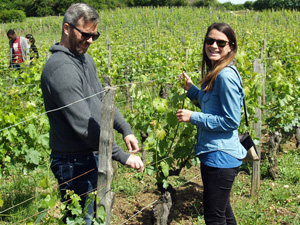
We then continued our journey up onto the plateau where the most renowned Saint-Emilion vineyards are located, including our adopted vines! Here we had a wonderful view of the surrounding Grand Cru Classé vineyards and the church spire of Saint-Emilion.
Château Coutet have their oldest vines on the plateau, the oldest being between 80 and 95 years old. The vines from this plot are cultivated organically as with the rest of the estate’s vineyards, but here horses are used to work the soil, no electrical tools are used, so pruning is done by traditional secatuers, and the organic treatments are administered by hand. The grapes that are produced are used for the wineries prestigious Emeri and Les Demoiselles wines.
The neighbouring plot of vines are home to our adopted vines. We took a few minutes to meet them and take a few photos to immortalise the moment!
We returned to the winery via the old Roman path that linked Libourne to Saint-Emilion, passing a plot of vines that had been replanted a couple of years ago. The vines have taken root nicely and work had begun to put in place the training wire structure.
Back at the winery, we enjoyed an aperitif of Chateau Coutet’s clairet, a deep pink rosé wine that is traditional to the Bordeaux region. We then tasted the Saint Emilion 2014, 2013, 2012 and 2011 vintages over lunch, learning about the different characteristics of each of these years, enabling us to see how the wine develops over time.
In the afternoon, we returned to the vineyard next to the winery buildings to learn about the work that remains in the vineyard between now and the harvest. Removing some of the leaves, raising the training wires, trimming the branches, treating the vines against mildew and black rot as necessary. There is still much to do before the grapes will be fully ripe and ready to be harvested.
We then had a quick tour of the fermentation hall and visited the cellar where the old vintages are stored. A real treasure trove!
The day finished with a visit of the barrel room to see where the wines slowly age before being ready to be bottled. We’ll learn more about this stage of wine-making during the Vinification Experience Days next year.
So much to learn about wine-making and the fascinating history of the winery. Our first week-end at the winery was all that we could have hoped for, and we can’t wait to return, as there is so much more to discover! Many thanks to our fantastic hosts, and to all of our participants for making it so memorable!
